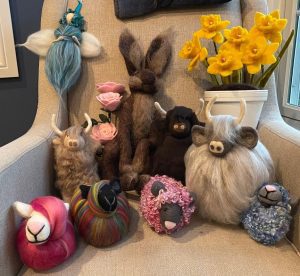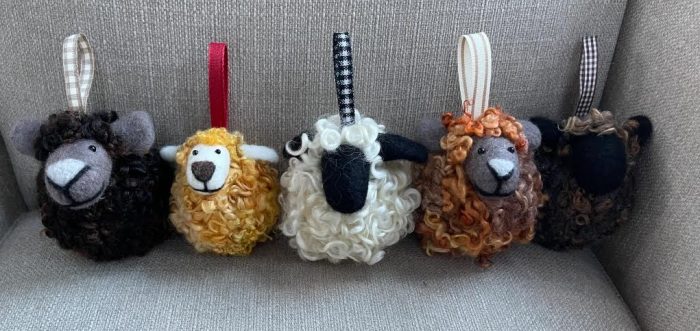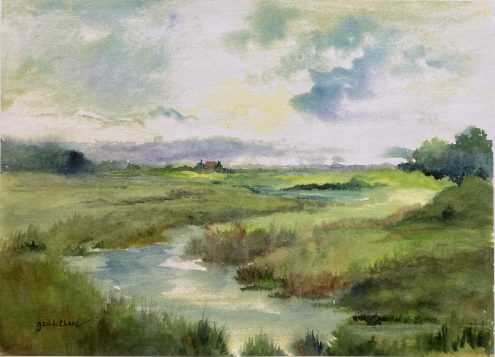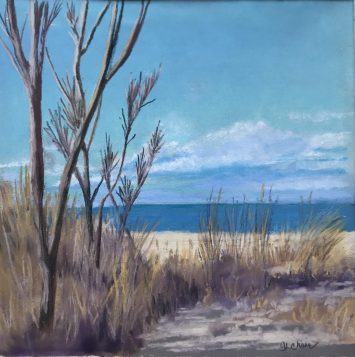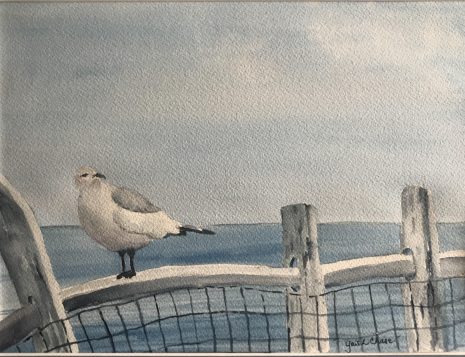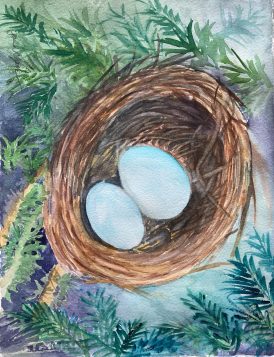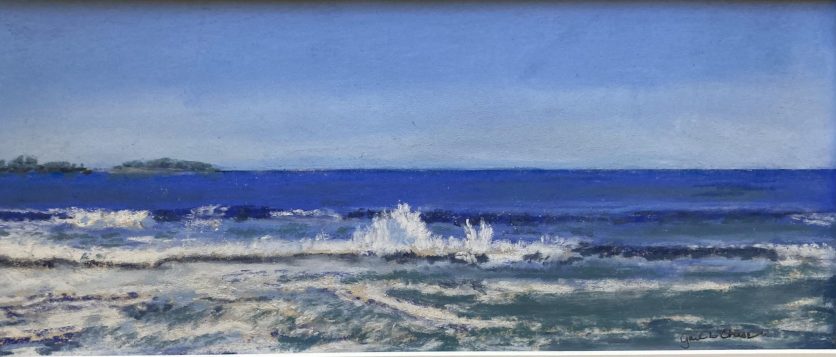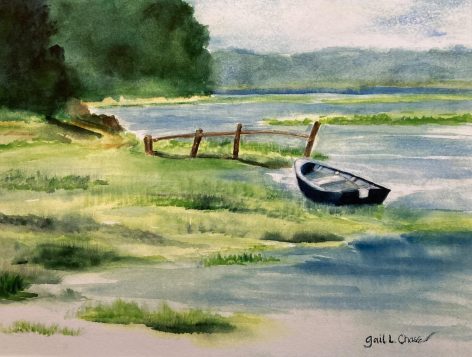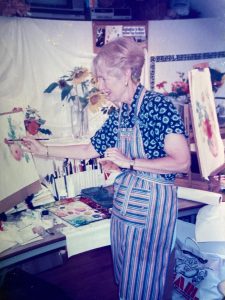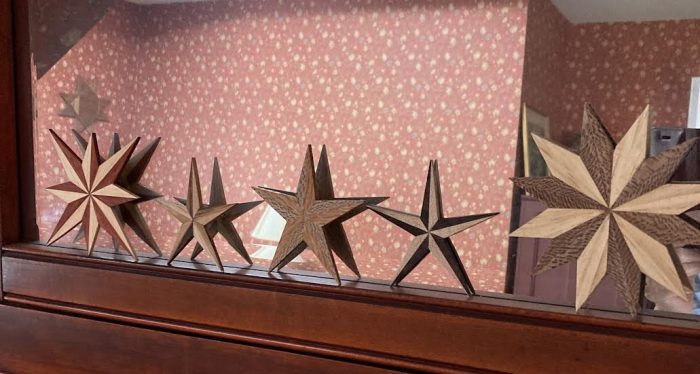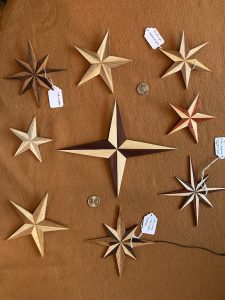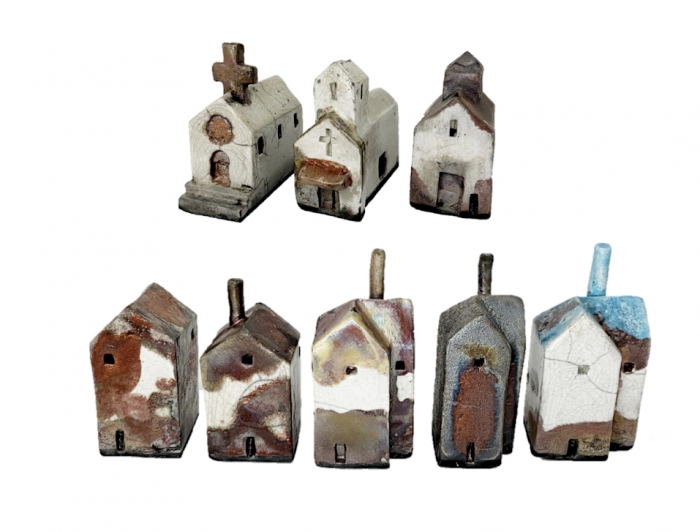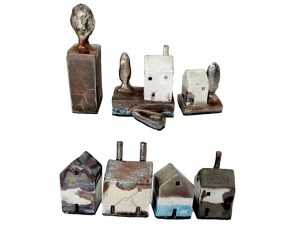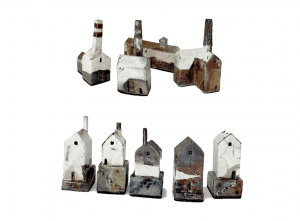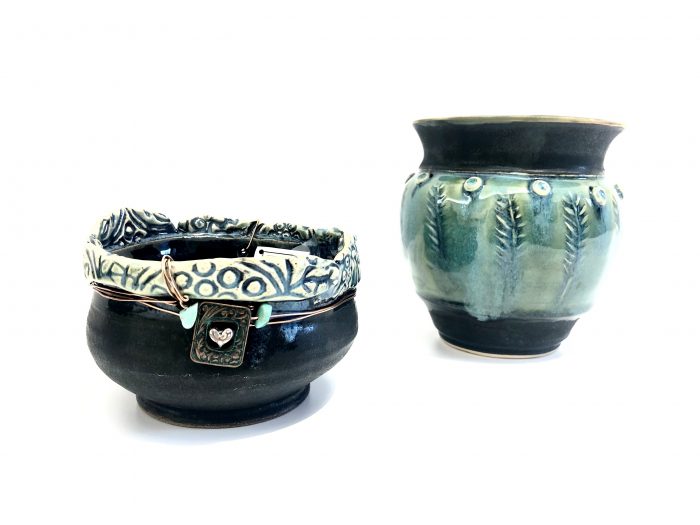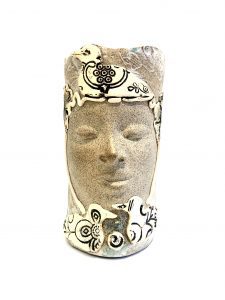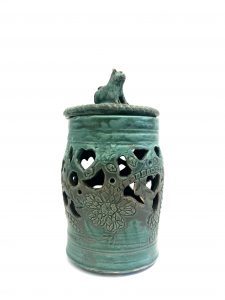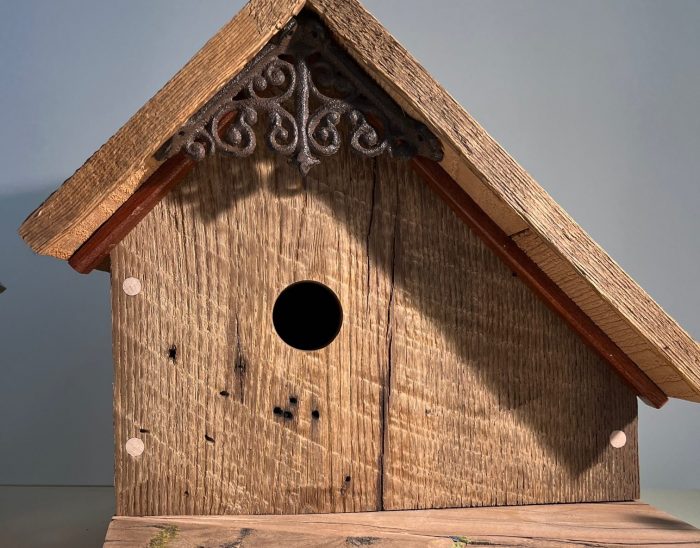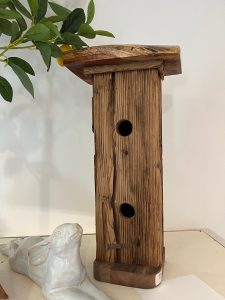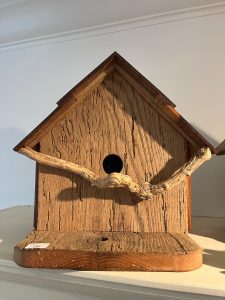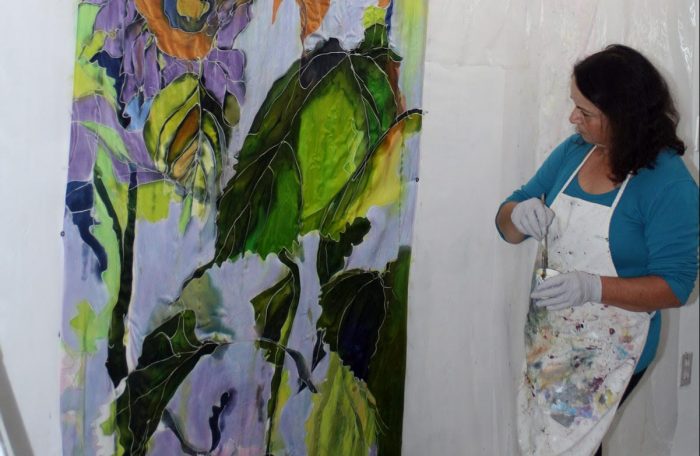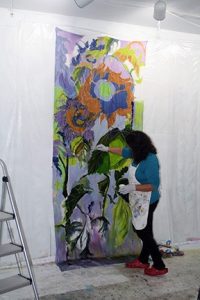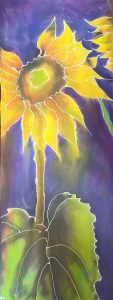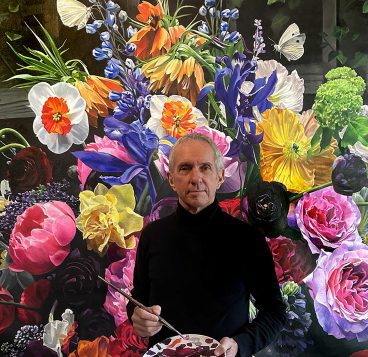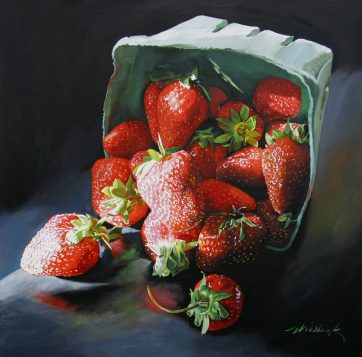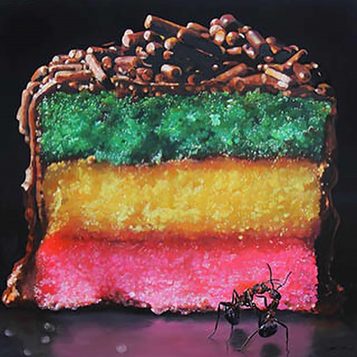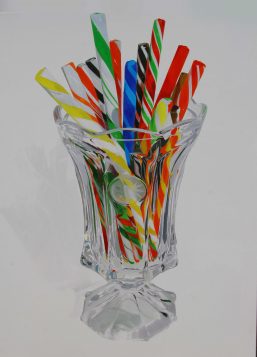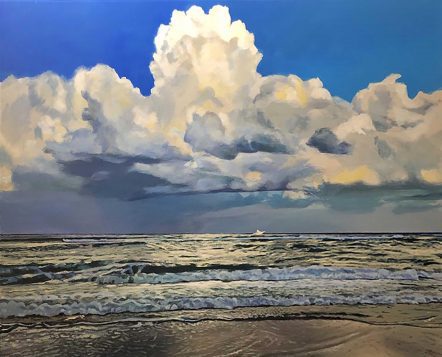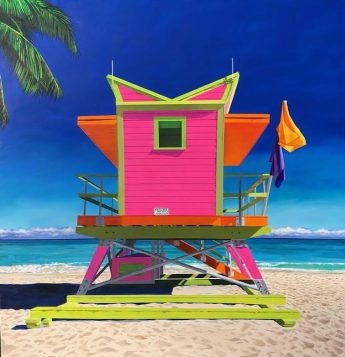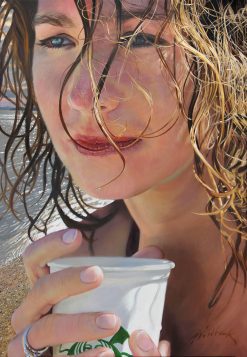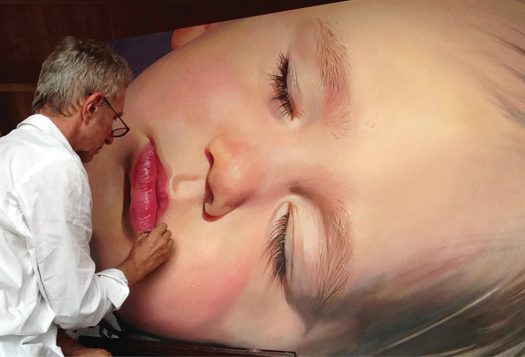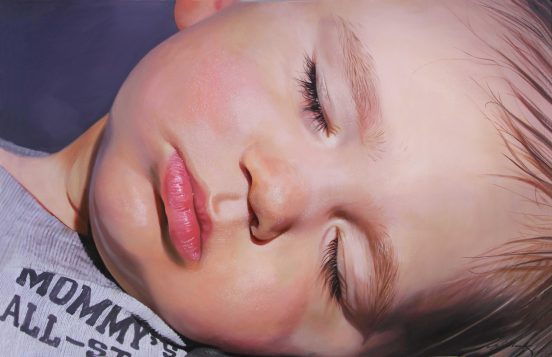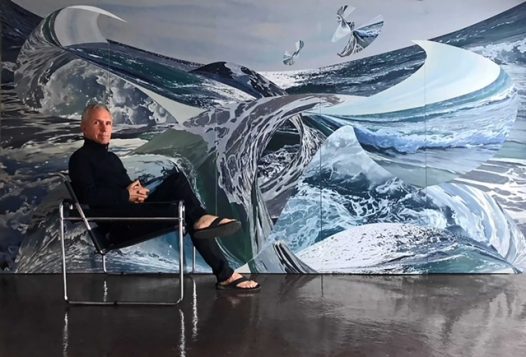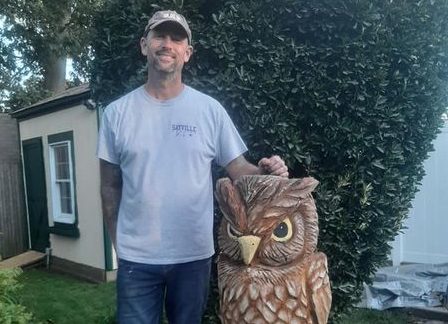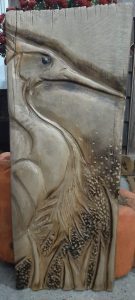Artist statement:
‘I paint as if in a dream highlighting my everyday experiences in poetic color and form with emotion. My subjects range from still life, landscapes, and portraits in the photorealistic style and futuristic visionary paintings with a surreal edge.’
By Irene Ruddock
In this interview, you will gain insight on a remarkable artist; a photorealist and visionary explorer who seeks to discover the inner world through art. Born deaf, Charles Wildbank achieved degrees from Yale, Pratt, and Columbia. After a few years of teaching deaf students, Wildbank burst upon the art world with his Fifth Avenue window showcases in New York City, portraits of David Hockney and Luciano Pavarotti and his famed eight foot tall rendering of the Cartier diamond. Read on to be amazed and uplifted by his fascinating career and inner depth that has transformed this artist’s vision and ours along with it.
Tell us about your beginning forays in the world of art? How did being deaf affect your choosing art as your life’s work?
There were hardly any options when it came to communicating as a deaf child other than pointing or drawing sketches to have others understand me. This was followed by strong approvals and eventually requests for some art from me. That is how my art career blossomed since I got adept at rendering just about anything.
How do you hear now? How did you learn to speak so well which is a difficult obstacle for the deaf?
Without wearing a hearing device, I am deaf as a stone, oblivious to all sounds. My parents, in realizing my lack of hearing as a toddler, brought home a rather large amplifier with headphones. For me, it was one of the best gifts. Music would be one of my first sounds. Also, I would wear them in front of a black and white television watching cartoons. This was followed shortly with a large new hearing aid which I could wear strapped around my chest for play outside. This helped me learn to speak and listen and not just read lips.
It was only recently that I received a pair of cochlear implants. That is when I first picked up the sound of fizz when opening a bottle of Perrier water! Every morning since, i woke up to a cacophony of bird songs outside.
For the most part, I enjoy painting in complete silence. Music is always my love as it was my first sound. For instance, I get so moved by the vocal range of one of Maria Callas’ arias, only possible through my cochlear implants. I am so grateful for this timely modern technology. Also, I am grateful for the closed captioning, for through this, I hear most everything, I am still learning how to listen and recognize language by ear. In retrospect, all those years of speech therapy after school hours were worth it!
Being understood has been a very challenging feat for me and it was though family and friends who would help me enunciate new words. It was perhaps through my willingness to accept feedback without feeling criticized which may have been an essential key to this day.
As a former teacher, I was most impressed by your heartfelt desire for parents to encourage children in their passions and gifts. Can you tell us about your family and the importance of their support in your life’s choice of art.
The idea of praising children for any accomplishment became the norm in my family and it is likely not just love, but the side benefit of children giving back. All my siblings had many talents and in turn received their nourishment and it made us all so proud. I’d wish this for every child in this world as it has such a transforming effect on their overall being. Literally, vices such as bullyism and wars would vanish. One cannot underestimate the power of the arts in our love starved world of today. All it would take is some beautiful architecture, some color in the room, some fashion, some life changing art, or a song to make one’s life turn around for the better!
How has your art progressed since the initial foray into the art world?
Though I was mostly self-taught, attending art college landed me into such a creative and stimulating environment among like peers. We visited many museums and galleries and took opportunities to remain inspired such as meeting older professional artists. My art output increased among the local art fairs in the Hamptons due to the delightfully growing demand for my art.
Can you describe the exemplary ‘Hado Series?’
After many years of paving out a career in such hyper- real fashion on Fifth Avenue, I wished to make a leap of imagination by adding a touch of surrealism in my newer work. Since many of my dreams contain a common element of water with giant waves throughout, I adopted this Japanese word HADO, which means “wave”. To achieve this subliminal oceanic effect, I incorporated some of my photographs with digital tools such as photoshop. I do anything I wished with my more mundane images thus transforming them into another realm from my imaginative choosing. This is followed by using these final images as notes as I paint from my laptop onto a very large canvas. This visual show can observed in my recent “Tempest” and “Emergence” murals.
A lot of us are lost when it comes to understanding digital art, yet you have achieved remarkable work that is not remote or cold in feeling but touches the soul. Can you explain this?
Instead of a computer mouse, I use a special stylus digital pen and tablet with my laptop in creating new images. My photo diaries are uploaded for this purpose, and I often start with a dream in mind’s eye and find elements in reality that I can morph into the composition on the screen. This would take many hours to achieve to my satisfaction. Finally, a grid is laid upon the approved image and sketched by hand onto a new blank canvas. Digitally I can add and take away elements that do not belong and amplify to match any given emotion or whim. Once sketched upon the canvas in pencil, I proceed to paint and brush onto that canvas with acrylic paint. This process usually take several months to complete.
Your portraits of everyday people are as mesmerizing as your famous portrait of Ruth Bader Ginsburg. What is it that draws you to a person?
Portraits are a very dear subject for me, particularly large ones. Whenever someone visually grabs my attention for any reason, I usually make a request for a pose which often goes rewarded. Perhaps it is their hair or certain attitude that I find appealing. Essentially, I look for that timeless feeling.
Your commission to paint for the ocean liner The Queen Mary 2 had to be an exciting honor.
For those murals on board the QM2, I was approached by agents representing Cunard Lines in Amsterdam by e-mail because my website must have captured their strong interest. There were requirements to be met and one interesting one was that the murals had to be flame proof. After some search online then, I was able to locate a canvas manufacturer that makes this Trevira (TM) brand and ordered 10-foot-wide rolls 40 feet long from Nurnberg, Germany. The ship’s insurance company in London requested my canvas sample and it passed the flame test. These tall murals depict coastal scenes of England and America and are now hung by the elevators on board the QM2. Fans having sailed on board would thoughtfully send me selfies confirming they have admired these murals. Such gestures would make my day.
You are presently showing your work at the Reboli Center’s Bloom exhibit in Stony Brook. What piece do you have on exhibit there?
Originally, I was going to include my latest “Grand Florale” at this Reboli Exhibition “Bloom”, however, fortunately and unfortunately, I had sold the mural, all 11 feet of it to a private collector. I decided to exhibit one of my favorites titled, “The Path” which depicts one of my refreshing walks by the beach path covered with rugosa roses in bloom.
How can the public view your work ?
Visit my latest website, http://wildbankfineart.com and facebook page under “Charles Wildbank” and view my story on the Reboli Center website. Also, I welcome visitors to my studio in Jamesport to see my work in person or to join a group for art lessons by appointment.
